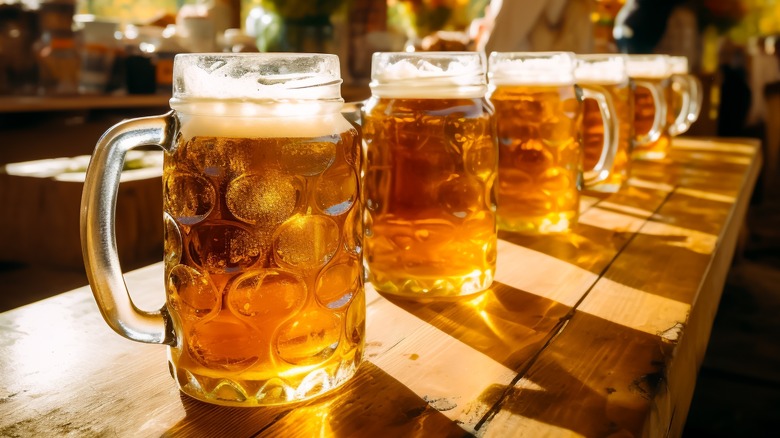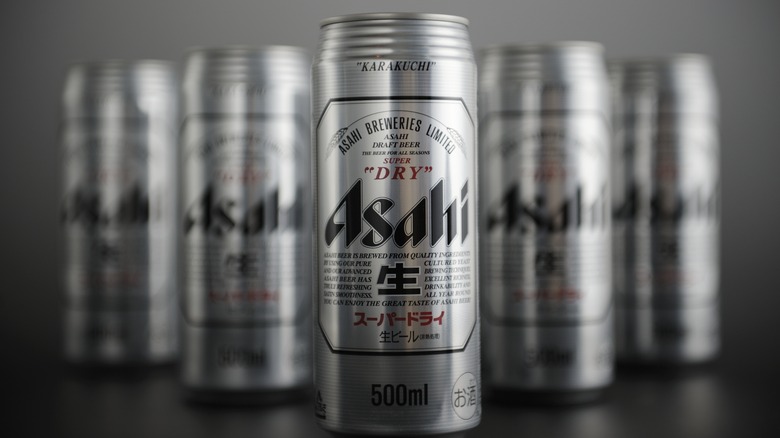What Is Dry Beer And Where Did It Originate?
Dry beer sounds like a contradiction. However, dry beer actually has nothing to do with wetness or water. Instead, it refers to a style or more aptly, a trait of beer. Whether you're aware or not, dry beer has probably come across your radar. The term can stump both self-proclaimed connoisseurs and novices alike, which is why we're here to demystify a few things about dry beer.
The defining characteristic of any beer that's classified as "dry" is that it lacks residual sugar. This means that similar to dry wine, dry beer isn't sweet. In contrast, it tends to have a crisp flavor that's marked by a vibrant degree of acidity. Generally quite carbonated with mellow aromas, dry beer often boasts a refreshing (but, sometimes bitter) finish with no lingering aftertaste. With a generally palate-cleansing quality, many dry beers are easy to enjoy, aspiring well with anything from sushi to pizza or just good vibes.
As for whether dry beers are among the most popular beers at breweries, that's a tough question. The reality is that many straw-colored pilsners fit within the definition yet even an inky stout can be made to be dry. Achieving dryness in brewing is simply a result of longer fermentation times — potentially increasing the alcohol content — or adding more hops to amp up bitterness. Consequently, many styles of beer could be described as dry, which is why the definition remains so hazy.
The origin story of the ever elusive dry beer
Although dry beers have likely been around for ages, the style didn't really make headlines until the release of Japan's Asahi Super Dry in 1987. The product of consumer research, dryness piqued interest in a big way. Marketed as a new kind of brew, it became so much of a sensation that other Japanese breweries including Kirin Brewery, Sapporo Breweries, and Suntory International quickly introduced their own versions. Naturally, it wasn't long until the widely popular category of "dry beer" made an international splash.
Just as rapidly as it appeared on the Japanese market, dry beer made its way into the United States. In fact, many domestic brands eager to hop on the trend began producing dry beers during the 1990s and early 2000s. Yet, despite its growing presence, the style never fully seemed to reach the same level of success as it did in Japan. Dry beer did, however, take off somewhat in Canada and Australia.
Currently, dry beer can be found anywhere in the world. Although the style may not be experiencing the same level of publicity as it did decades before, dry beer continues to evolve, gaining traction in craft brewing sectors. At the end of the day, dryness as a stylistic choice will remain relevant within the realm of brewing as choosing a good beer can be complicated and people's tastes vary greatly.

